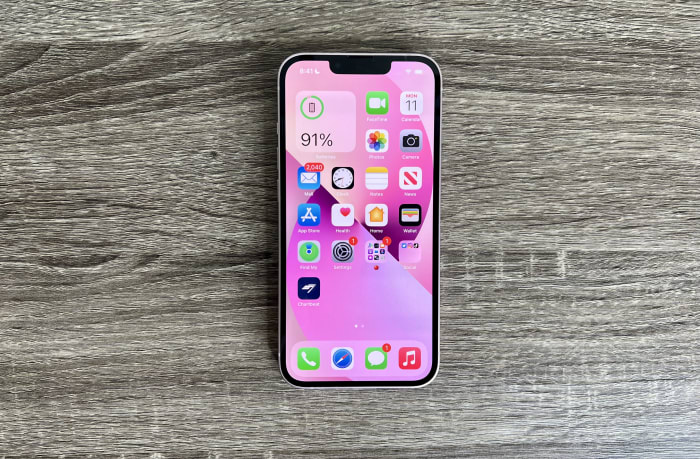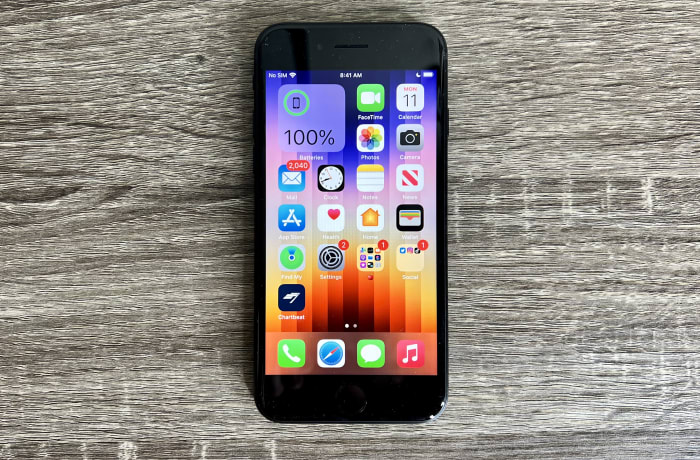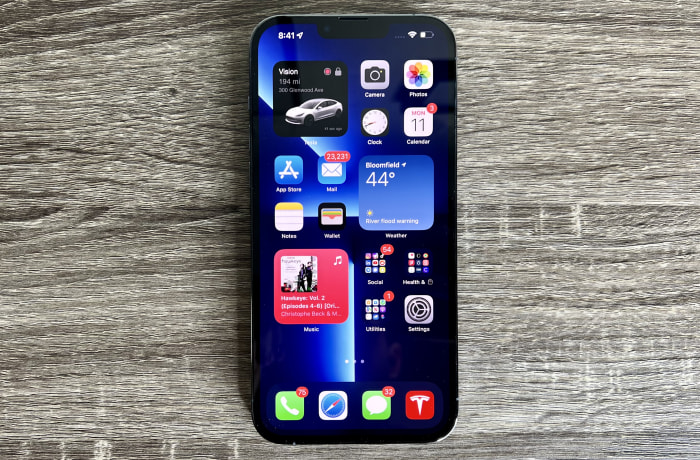The Arena Media Brands, LLC and respective content providers to this website may receive compensation for some links to products and services on this website.
Apple’s iPhone lineup has more to choose from than ever before, and the Cupertino-based tech giant is really aiming to offer a model for everyone. Chances are if you already know you want an iPhone, you’ve already been sold on iOS, which offers deep integration with Apple’s other gadgets (and, of course, the ability to send and receive blue bubbles).
To help you pick the best model for your needs–across functionality and budget–we’ve done the heavy lifting of testing across performance, usability and, of course, features.
With every iPhone we tested a number of apps like basic social media scrollers (TikTok, Twitter) with a healthy amount of work and play in between. We took countless photos to figure out which could take the most Instagram-worthy shots and measured just how long the battery really lasts. We also tried each day-in and day-out to see how they feel in the hand, to check durability, and to see if the iPhone really fits the bill for every user.
Now, let’s break down our top iPhone models and which might be best for your needs.
Contents
Best Overall: iPhone 13
Starting at $799 from Amazon, BestBuy, Walmart
When it comes to the standard recommendation, it’s almost always the iPhone 13. It delivers the experience you expect from an iPhone—iOS and apps run smoothly, the cameras are a blast to shoot with, and it offers solid battery life. Let’s break down why it’s the best option for most.

Apple’s iPhone 13 in Pink.
Jacob Krol/The Street
The 6.1-inch OLED display is missing some buzzy features like a super smooth screen (from a fast 120hz refresh rate) but still delivers a rich, vibrant viewing experience. It’s great for scrolling through social apps like TikTok or Twitter, watching movies and TV shows from Disney+ or Netflix, and getting very bright when using it outdoors. It also leverages Face ID–Apple’s tech for securely unlocking your phone with facial recognition. It also boasts an excellent lens for selfies and FaceTime–but let’s be honest, it works like a charm for TikTok dances.
Unlike the Pro models, which have three lenses, the iPhone 13 sticks with two lenses: A 12-megapixel wide and 12-megapixel ultra-wide. Both are excellent shooters, and the iPhone does the heavy lifting, giving you the ability to simply point and click. AI and software solutions handle balancing the picture and autofocusing. While you won’t find a long list of shooting modes or very intense zoom levels like in Samsung’s Galaxy line, the iPhone offers Portrait Mode, the ability to customize ratio and “photographic styles.” The latter feature is new and lets you add some flavor via filters embedded when the iPhone 13 takes a photo.
For instance, we enjoyed the ‘Vibrant’ setting; it was much more colorful and created a more realistic result. The iPhone 13 is also excellent at taking video up to full 4K resolution.
The rest of the iPhone 13 is pretty standard for what you’d want from a smartphone. It’ll charge via a lightning port on the bottom or through wireless charging on the back. The larger battery and improvements from the Apple-made A15 Bionic inside deliver all-day battery life. And the $799 price gets you 128GB of storage. It sticks with the same design that Apple ushered in with iPhone 12–a modern take on the iPhone 4 or 5–with glass and aluminum. But for the 13, it comes in some fresh shades.
If you’re in the market for a new iPhone, you should start with the iPhone 13. Currently have an iPhone 12? You don’t need to make the jump, but those with older models who want a fresher experience or camera improvements should consider the 13.
| iPhone 13 | |
|---|---|
|
Display |
6.1-inch Super Retina XDR OLED Screen |
|
Cameras |
12-megapixel wide and 12-megapixel ultrawide (Main); 12-megapixel wide (Front) |
|
Processor |
Apple A15 Bionic processor |
|
Storage |
128GB, 256GB or 512GB |
|
Battery |
Up to 19 hours video playback |
|
Colors |
Blue, Green, Midnight, Pink, (PRODUCT) RED or Starlight |
|
Size |
5.78-inches X 0.30-inches X 2.82-inches; 6.14-ounces |
|
Price |
Starting at $799 |
Best Budget iPhone: iPhone SE
Starting at $429 from Amazon, BestBuy, Walmart

Apple’s third-generation iPhone SE in Midnight.
Jacob Krol/The Street
Scroll to Continue
Yes, the iPhone SE is a $429 smartphone…but (and it’s a good but) it’s as fast as the entire iPhone 13 family, just housed in an older look.
The third-generation SE looks identical to the second-gen and, truthfully, similar to an iPhone 8. There’s a Home Button with “Touch ID” on the bottom and above it is a smaller 4.7-inch Retina screen with a 720p resolution. There’s a single 12-megapixel lens and a simple glass back. There’s nothing new with the design.
Inside, Apple’s chosen the A15 Bionic–the same chip as the iPhone 13–to power the SE. It’s snappy, swift and runs like a cheetah. Apps open quickly, you can easily have a FaceTime window hovering while playing a game, and editing photos is a breeze. The SE didn’t even get overly warm in our testing with some more intense tasks. It bests nearly any other budget smartphone out there.
The single 12-megapixel lens isn’t new but is fine for most shots and should be ample for most potential owners. It’s quick to deliver an image and provides accurate color and visuals with no fish-eye effect. One downside is that “Portrait Mode” only works with people–so no cute bokeh pet shots are possible here.
Lastly, Apple packed a bigger battery inside (though it’s not sharing the exact cell size, iFixit’s teardown shows it as 2,018mAh) and lets the SE stretch closer to nearly a full day of use. Mileage will vary, though, depending on how you use the SE. And the $429 iPhone also features 5G–specifically Sub-6 and C-Band support.
| iPhone SE (third-generation) | |
|---|---|
|
Display |
4.7-inch Retina HD LCD screen |
|
Cameras |
12-megapixel wide (Main); 7-megapixel (Front) |
|
Processor |
Apple A15 Bionic processor |
|
Storage |
64GB, 128GB or 256GB |
|
Battery |
Up to 15 hours of video playback |
|
Colors |
Midnight, (PRODUCT) RED or Starlight |
|
Size |
5.45-inches X 2.65-inches X 0.29-inches; 5.09-ounces |
|
Price |
Starting at $429 |
Best Cameras: iPhone 13 Pro or 13 Pro Max
Starting at $999 from Amazon, BestBuy, Walmart

Apple’s iPhone 13 Pro Max in Sierra Blue.
Jacob Krol/The Street
If you’re a creator, photographer, filmmaker, or someone who loves to capture content, then the iPhone 13 Pro or 13 Pro Max deserves a look. They’re not cheap at $999 or $1,099, but that price gives you a better screen and–more importantly– three cameras.
The 12-megapixel wide and ultrawide cameras (same as the iPhone 13) sit beside a 12-megapixel Telephoto lens. All three of these have increased size and higher apertures, so they collect more light and details and pack those into the final image. They’re some of the best cameras available on any phone on the market and provide a triple-lens threat that will help you get any shot.
The ultrawide lens here is working twice as hard since it can also shoot in the ultra-popular “Macro” mode. This way you can get close to an object–within a few inches –to capture a high level of detail. It makes for a very eye-catching image. You can then review any photos or videos on a vibrant and smooth 6.1-inch or 6.7-inch display. Both of these are OLED panels for vibrant colors and deep blacks, but they also support up to 120Hz refresh rates. This way you won’t see stutters when scrolling through a feed and visuals will look smoother.
The iPhone 13 Pro and 13 Pro Max ultimately step things up in the photography and videography department with three capable cameras and on the front with a fantastic display.
| iPhone 13 Pro | iPhone 13 Pro Max | |
|---|---|---|
|
Display |
6.1-inch Super Retina XDR OLED with ProMotion |
6.7-inch Super Retina XDR OLED with ProMotion |
|
Cameras |
12-megapixel wide, 12-megapixel ultrawide and 12-megapixel telephoto (Main); 12-megapixel (Front) |
12-megapixel wide, 12-megapixel ultrawide and 12-megapixel telephoto (Main); 12-megapixel (Front) |
|
Processor |
Apple A15 Bionic |
Apple A15 Bionic |
|
Storage |
128GB, 256GB, 512GB or 1TB |
128GB, 256GB, 512GB or 1TB |
|
Battery |
Up to 22 hours of video playback |
Up to 28 hours of video playback |
|
Colors |
Alpine Green, Gold, Graphite, Sierra Blue or Silver |
Alpine Green, Gold, Graphite, Sierra Blue or Silver |
|
Size |
5.78-inches, X 2.82-inches X 0.30-inches; 7.19-ounces |
6.33-inches, X 3.07-inches X 0.30-inches; 8.46-ounces |
|
Price |
Starting at $999 |
Starting at $1,199 |
Honorable Mentions
Longest Battery Life: iPhone 13 Pro Max
Starting at $1,099 from Amazon, BestBuy and Walmart
If you’re single-focused on getting the longest battery life possible in an iPhone, you’ll want to opt for the iPhone 13 Pro Max. Fair warning, though, it’s a massive phone with a 6.7-inch display. The more significant form factor does let Apple pack a larger battery inside and it stretches well beyond a day and a half with even intense use.
For Small Hands: iPhone 13 Mini
Starting at $699 from Amazon, BestBuy and Walmart
The iPhone 13 Mini is a pint-sized version of the iPhone 13–it has the same camera system and overall performance in a smaller form. It’s more manageable for smaller hands or anyone who doesn’t want a massive phone. The 13 Mini is 5.18 inches tall and just 2.53 inches wide. It still features a rich 5.4-inch Retina screen with more pixels per inch than the regular 13.
Frequently Asked Questions
Where can I buy the latest iPhone model?
Apple’s flagship iPhone 13 family–13 Mini, 13, 13 Pro, and 13 Pro Max–are luckily available directly from Apple, along with various other retailers and carriers. In the United States, you can readily get an iPhone 13 of any size from Amazon, BestBuy, Target and Walmart. In terms of carriers, AT&T, T-Mobile and Verizon all carry Apple’s flagships and even some smaller or prepaid carriers offer them.
If you’re looking for an iPhone SE, iPhone 12 or iPhone 11 (all of which are still in the official lineup), Apple offers these along with the other retailers mentioned above. Those looking for other models or anything other than the base 11 or 12 will need to look at third-party shops or buy a used device. For those, we’d recommend Apple’s online refurbished storefront and Decluttr as two of the safest options.
Where can I sell my old iPhone?
Once you decide on your new iPhone, don’t just discard your old one in some drawer. Regardless of the condition, you can trade it in for some cash, credit towards your new phone or even towards your phone plan.
With a service like Decluttr or Gazelle you’ll answer some questions about your current iPhone, lock in a trade-in price and ship it to them for a check using a provided label before getting your final valuation. Apple works similarly and provides credit towards your purchase or in the form of gift card to the tech giant. Similarly, if you’re leasing an iPhone on AT&T, T-Mobile or Verizon you can trade in your current device for a lower monthly payment.
What exactly is 5G?
Like 4G LTE and 3G before that, 5G is the latest network standard rolling out over the world (specifically in the United States) across carriers like AT&T, T-Mobile, and Verizon. The promise is faster connectivity that can power new experiences geared toward consumers and businesses.
Networks vary a bit from carrier to carrier so there are some differences when it comes to the types of 5G network. Simply put, there are some 5G standards that are closer to 4G LTE, and some that are faster with speeds that likely surpass your home connection.
Which iPhones support 5G?
Aside from the iPhone 11, all the other iPhones still sold by Apple–iPhone SE (3rd Gen), 12, 13 Mini, 13, 13 Pro and 13 Pro Max–all support 5G in some form. For the complete package with support for 5G Sub-6, mmWave and C-Band you’ll need to get an iPhone 12 or iPhone 13. The iPhone SE doesn’t include mmWave support, but Sub-6 and C-Band support is included.
How do I speed up my iPhone?
If your current iPhone is starting to slow down, your immediate answer doesn’t need to be to go buy a new one. For starters, we’d recommend backing up your data (either to iCloud or a laptop) and then ensuring your phone is running the latest version of iOS.
If you’re experiencing slowdowns while attempting to use an app or complete a function, we’d recommend doing a restart known as a soft reset. You’ll hold in the “power button” and “volume up” until you see the Apple logo, and then release. Another way to ensure a smooth operation is to remember to close out apps in multitasking.
Which storage size should I get?
Apple amped up the base storage of the iPhone 13 to a starting size of 128GB–that’s double the standard 64GB with the iPhone 12. And for many, 128GBs should be alright –those who frequently capture photos or use plenty of apps could likely benefit from upgrading to 256GB. It’s key to remember that the iPhone doesn’t have physically expandable storage, but you can backup some data to iCloud.
The iPhone SE starts at 64GB, which is on the smaller side of usable space out of the box. For most people, it makes sense to spend the extra $50 and get the 128GB for $479.
What’s the best way to transfer my data?
Moving data between iPhones is pretty seamless in more recent iterations of iOS and newer iPhone models, Apple will let you use iCloud to move your data over safely. It will pop up as a splash screen during setup, but the other option is to wirelessly transfer your data when the two iPhones are near each other. It takes longer but will create a carbon copy on the newer phone.
Prices are accurate and items in stock at time of publishing.

